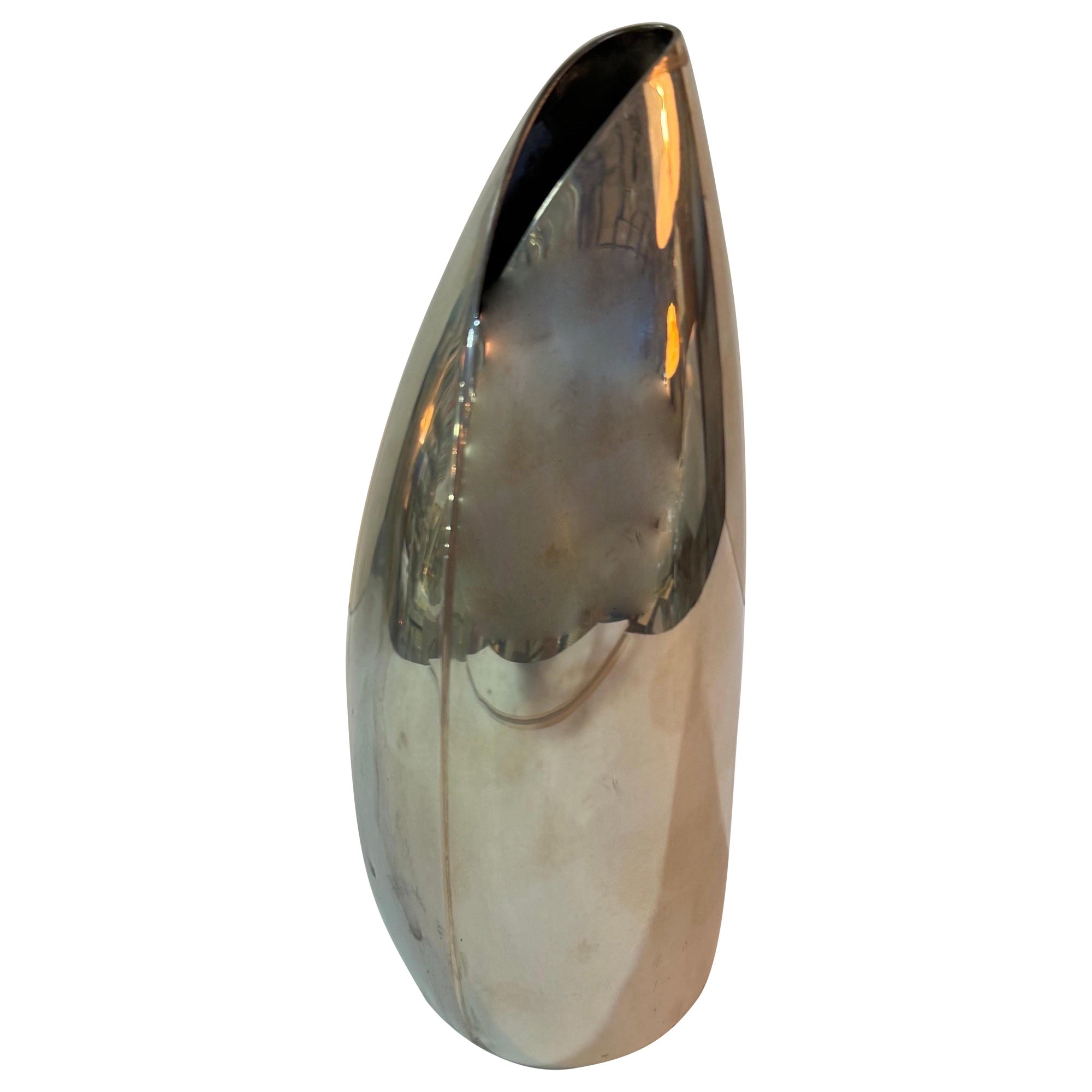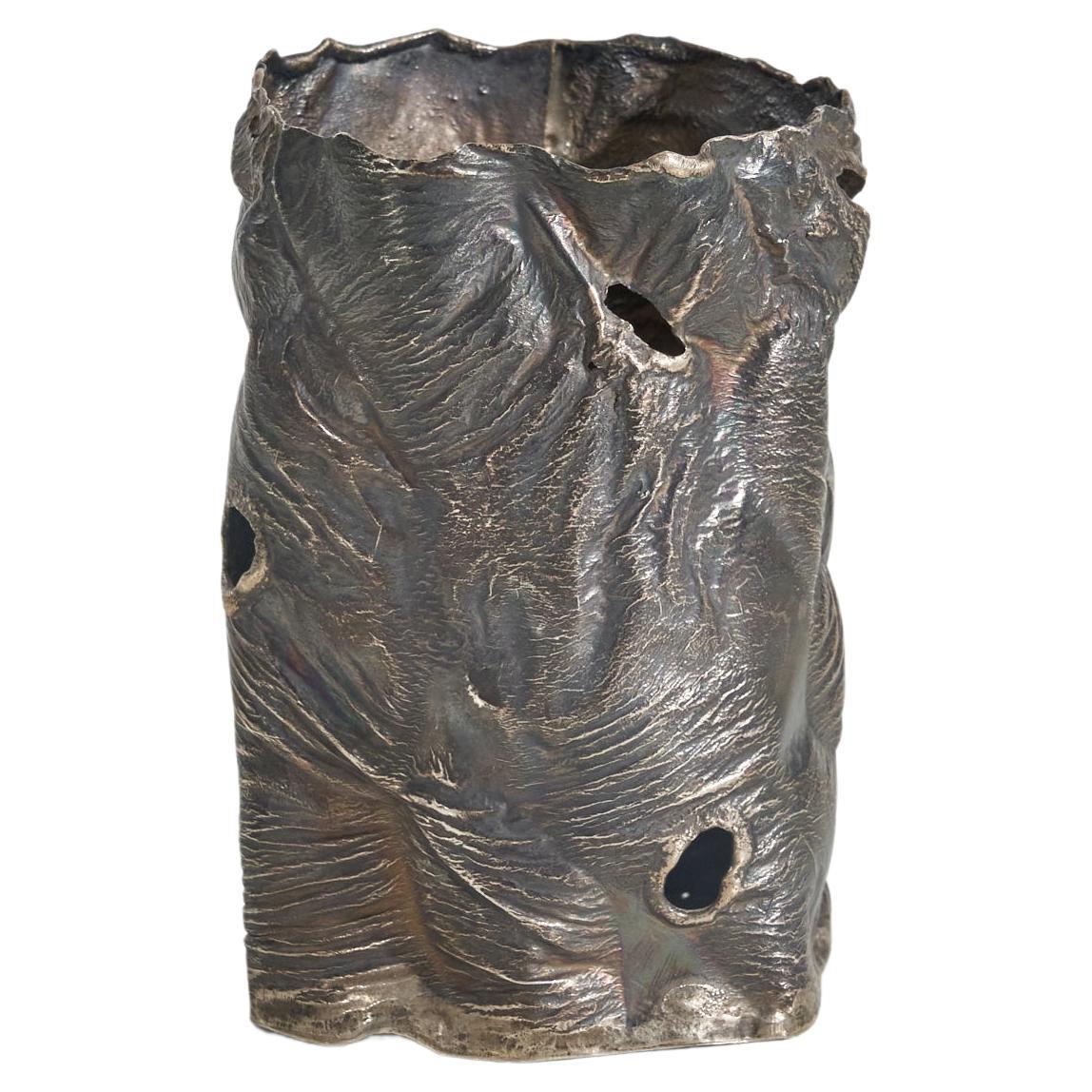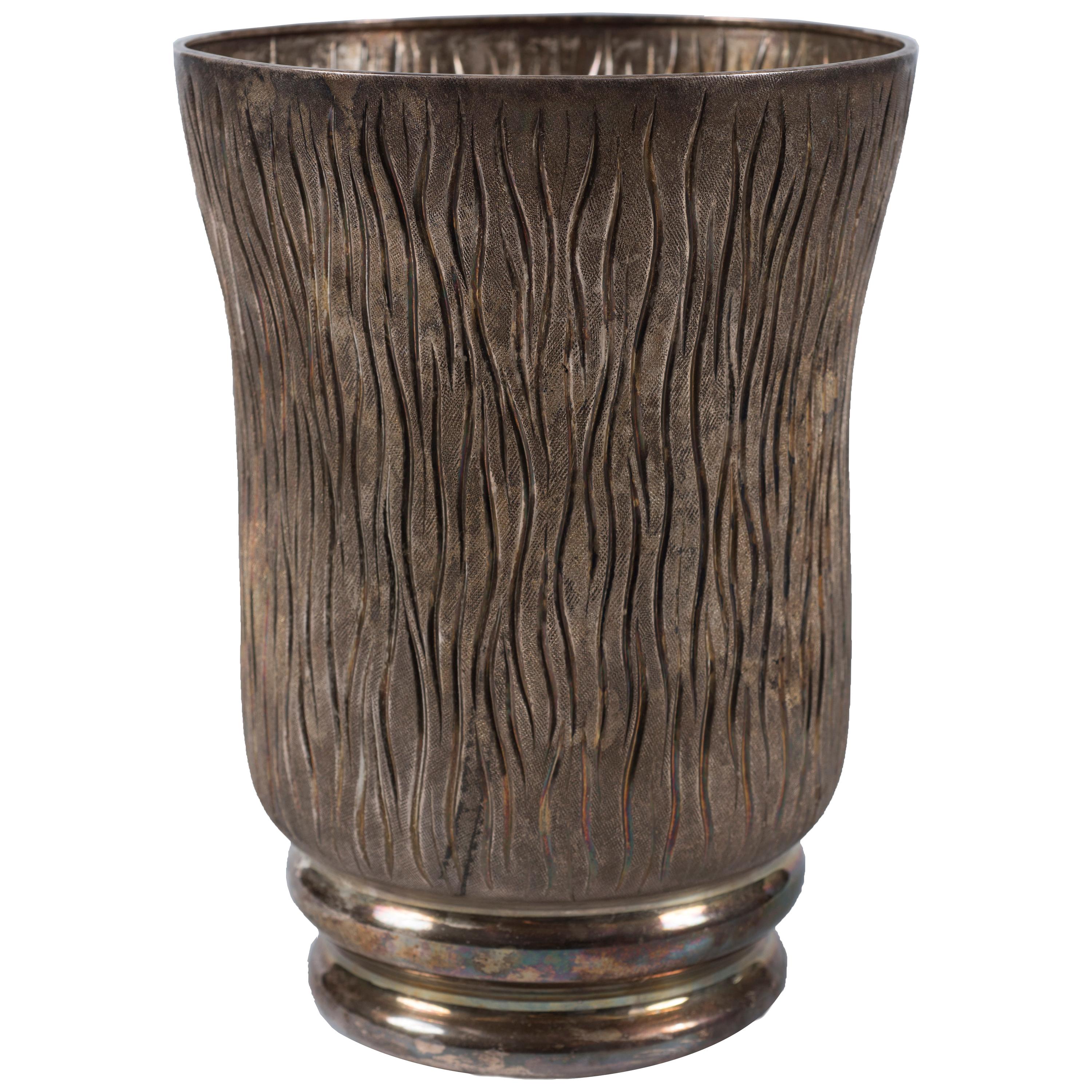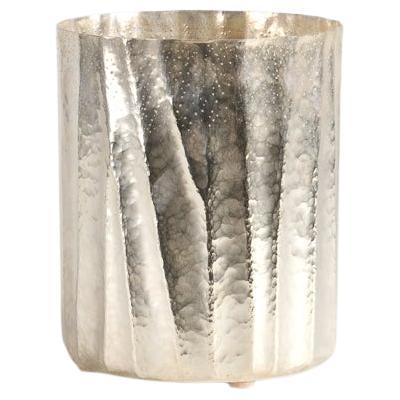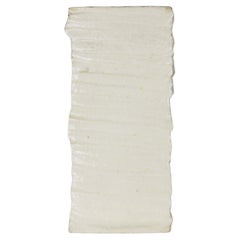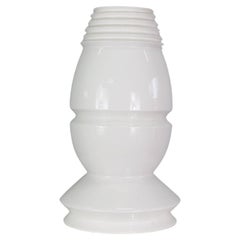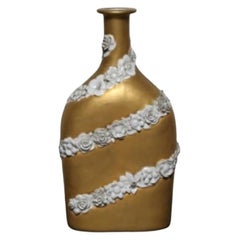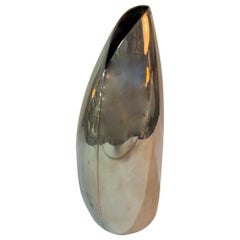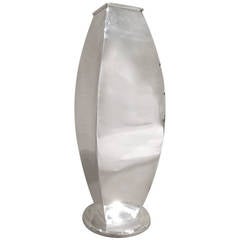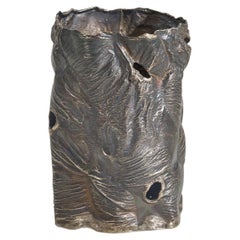Items Similar to Luigi Genazzi Ovoidal Vase in Hammered Silver by Calderoni Jewels 20th Italy
Want more images or videos?
Request additional images or videos from the seller
1 of 6
Luigi Genazzi Ovoidal Vase in Hammered Silver by Calderoni Jewels 20th Italy
$1,095.67
£815.87
€920
CA$1,500.85
A$1,673.61
CHF 873.22
MX$20,535.88
NOK 11,114.71
SEK 10,530.95
DKK 7,003.63
Shipping
Retrieving quote...The 1stDibs Promise:
Authenticity Guarantee,
Money-Back Guarantee,
24-Hour Cancellation
About the Item
Ovoidal vase in hammered silver with a light ashlar surface.
This elegant centerpiece was designed by Luigi Genazzi and produced by Calderoni Jewels.
Marked under the base with the manufacturer's mark (Calderoni Jewellery)
Datable in the second half of the 20th century.
Calderoni was established in 1840 in Milan’s Via della Lupa, known today as Via Torino. At that time, Milan was a romantic city, dominated by the Habsburg dynasty.
In 1870, Calderoni opened a prestigious establishment in Piazza Duomo, which soon became a point of reference for the city’s aristocracy. Calderoni became the official supplier of the House of Savoy and its prestigious customers included the nobility and royal houses of Europe.
In 1942, Calderoni moved to Via Montenapoleone, symbol and centre of Italian luxury in the European Capital of fashion, design and the jewelry.
- Creator:Calderoni (Jeweler),Luigi Genazzi (Designer)
- Dimensions:Height: 11.82 in (30 cm)Diameter: 3.94 in (10 cm)
- Style:Other (Of the Period)
- Materials and Techniques:Silver,Hammered
- Place of Origin:
- Period:
- Date of Manufacture:20th Century
- Condition:
- Seller Location:Montecatini Terme, IT
- Reference Number:1stDibs: LU5304221850702
About the Seller
4.9
Vetted Professional Seller
Every seller passes strict standards for authenticity and reliability
1stDibs seller since 2020
124 sales on 1stDibs
Typical response time: 1 hour
- ShippingRetrieving quote...Shipping from: Florence, Italy
- Return Policy
Authenticity Guarantee
In the unlikely event there’s an issue with an item’s authenticity, contact us within 1 year for a full refund. DetailsMoney-Back Guarantee
If your item is not as described, is damaged in transit, or does not arrive, contact us within 7 days for a full refund. Details24-Hour Cancellation
You have a 24-hour grace period in which to reconsider your purchase, with no questions asked.Vetted Professional Sellers
Our world-class sellers must adhere to strict standards for service and quality, maintaining the integrity of our listings.Price-Match Guarantee
If you find that a seller listed the same item for a lower price elsewhere, we’ll match it.Trusted Global Delivery
Our best-in-class carrier network provides specialized shipping options worldwide, including custom delivery.More From This Seller
View AllDecorative Vase in Stoneware with Signature by Carlo Zauli 1960s Italy
By Carlo Zauli
Located in Montecatini Terme, IT
Decorative vase realized in a warm gray stoneware with band decorations, designed and manufactured by Carlo Zauli in 1960s.
Signature engraved visible...
Category
Vintage 1960s Italian Mid-Century Modern Vases
Materials
Stoneware
Gianni Osgnach Mojo Vase in Lacquered Polyurethane Foam 1997
Located in Montecatini Terme, IT
Mojo vase in polyurethane foam painted with elastic resins, designed and manufactured by Gianni Osgnach in 1997.
With the author's signature and date under the base
Category
1990s Italian Modern Planters, Cachepots and Jardinières
Materials
Foam
Sergio Asti BBK Vase in White Enameled Ceramic Dated in 1980s Author's Proof
By Sergio Asti
Located in Montecatini Terme, IT
Vase in white enameled ceramic, designed by Sergio Asti and datable in the 1980s.
The vase is an author's proof as indicated under the base.
The ceramics and glass production of Sergio Asti reflects his methodical and accurate ways of thinking, who offered through his sensibility and his strong relationship with the Italian fine design tradition an exploration of silhouettes, forms, materials, techniques, and colors.
This vase was part of a series of totemic and tubular ceramics...
Category
Vintage 1980s Italian Post-Modern Vases
Materials
Ceramic
Gio Ponti Porcelain Bottle with Relief Decoration by Richard Ginori 1930s Italy
By Gio Ponti, Doccia Porcelain
Located in Montecatini Terme, IT
A golden porcelain bottle with the application of hand-modeled white flowers in relief this beautiful piece was designed by the Italian master Gio Ponti and manufactured by Richard Ginori Pittoria di Doccia between 1923 and 1938.
This porcelain bottle was originally presented at the 1935 Paris exhibition L'art italien des XIX et XX siècles.
The manufacturer brand 'Richard Ginori Pittoria di Doccia' is visible under the base.
The design of this piece was documented in the Gio Ponti catalog shaped in close collaboration with the Gio Ponti Archives and its founder Salvatore Licitra, edited by Taschen.
The history of the Ginori Manufactory began in Doccia, just a stone's throw away from Florence, when in 1735 Marquis Carlo Andrea Ginori started a porcelain factory which was destined to become a worldwide icon of style.
The eighteenth-century is a key century for the development of porcelain in Europe, in this period the first manufactures are born, fed by new styles and international trends.
In stately homes, palaces and courtyards, the precious porcelain of the Doccia Manufactory is synonymous with elegance and refinement.
The passage from the nineteenth, the century of reason to that of feeling marks a new chapter in the development of artistic taste and the manufacture of porcelain. Florence becomes the scene of a controversy between the academic supporters of the Beautiful ideal and the naturalists promulgators of the beautiful natural Since 1806 the direction of the Manifattura passed to Leopoldo Carlo Ginori Lisci who initiates a process of profound renewal.
In 1986 The Manifattura expanded and the Richard Ginori Ceramic Company is born. The tradition of master craftsmen meets new technologies and the creations are perfected thanks to the use of new patents
From 1923 to 1933 the artistic direction of the Manifattura was entrusted to Gio Ponti. The master is responsible for introducing highly innovative elements with sensitivity and respect for the taste for the ancient, and for the oriental culture. In 1925 at the Universal Exposition in Paris, the Manifattura and its artistic director were awarded the assignment to both of a Grand Prix.
The Manufactory was renewed by relying on the experience of the greatest Italian designers of the time: Franco Albini, Franca Helg, Antonio Piva, Sergio Asti, Achille Castiglioni, Gabriele Devecchi, Candido Fior...
Category
Vintage 1930s Italian Mid-Century Modern Ceramics
Materials
Ceramic, Porcelain
Sergio Asti Jaipur Vase in Black Enameled Ceramic Dated 1980s Author's Proof
By Sergio Asti
Located in Montecatini Terme, IT
Jaipur vase in black enameled ceramic, designed by Sergio Asti and datable in the 1980s.
The vase is an author's proof as indicated under the base.
The ceramics and glass production of Sergio Asti reflects his methodical and accurate ways of thinking, who offered through his sensibility and his strong relationship with the Italian fine design tradition an exploration of silhouettes, forms, materials, techniques, and colors.
This vase was part of a series of totemic and tubular ceramics...
Category
Vintage 1980s Italian Post-Modern Vases
Materials
Ceramic
Tommaso Barbi Table Lamp in Murano Glass Italian Manufacture 1970s
By Tommaso Barbi
Located in Montecatini Terme, IT
Elegant abat-jour table lamp in satin murano glass “a bolle” with brass details. The conical lampshade diffuses a beautiful indirect light that valorize the room.
Label inside the ...
Category
Vintage 1970s Italian Post-Modern Table Lamps
Materials
Brass
You May Also Like
F.A.L.A. Guido Niest Lega Argentata Sculptural Silvered Vase
By Guido Niest Atelier
Located in New York, NY
A “Lega” vintage sculptural silvered vase designed by master metalsmith Guido Niest and crafted by Fabbrica Artigianale Lavorazione Argento (F.A.L.A.).
Italy, circa 1980.
Signed on...
Category
Vintage 1980s Italian Minimalist Vases
Materials
Metal, Silver
R. VALLE – Large 20th Century Solid Silver Vase – Northern Italy
Located in SAINT-OUEN-SUR-SEINE, FR
Large silver vase with a tall, narrow neck decorated with drop-shaped repoussé. 800 silver.
Italian work from the 1980s.
Dimensions: Height: 57 cm - Maximum diameter (body): 34 cm
...
Category
Late 20th Century Italian Vases
Materials
Silver
Sterling Silver Vase by Jona Torino, Italy, 1990s
Located in Torino, IT
A rectangular vase in sterling silver made by Jona Torino, Italy.
Dimensions: H 26.3 cm; W 8.4 cm; D 7.5 cm.
Weight: 764 gram.
Category
Late 20th Century Italian Vases
Materials
Sterling Silver
Italian Designer, Vase, Sterling Silver, Italy, 1940s
Located in High Point, NC
A sterling silver vase designed and produced in Italy, 1940s.
Category
Vintage 1940s Italian Mid-Century Modern Vases
Materials
Sterling Silver
Vintage Messulam Silver Vase, Italian Production, 1932
By Ditta Messulam Enrico
Located in Roma, IT
Vintage Messulam silver base, Italian Production 1932.
Marked under the base.
Very good conditions.
This object is shipped from Italy. Under existing legislation, any object in ...
Category
Vintage 1930s Italian Vases
Materials
Silver
Emiliano Céliz, Contemporary Sculptural Silver-plated Vase, Argentina, 2024
By Emiliano Céliz
Located in New York, NY
Céliz begins each piece with an idea (rather than sketches) and in the making of it discovers his final design. More incredible still, his decorative artworks are often wrought from ...
Category
2010s Argentine Vases
Materials
Copper
